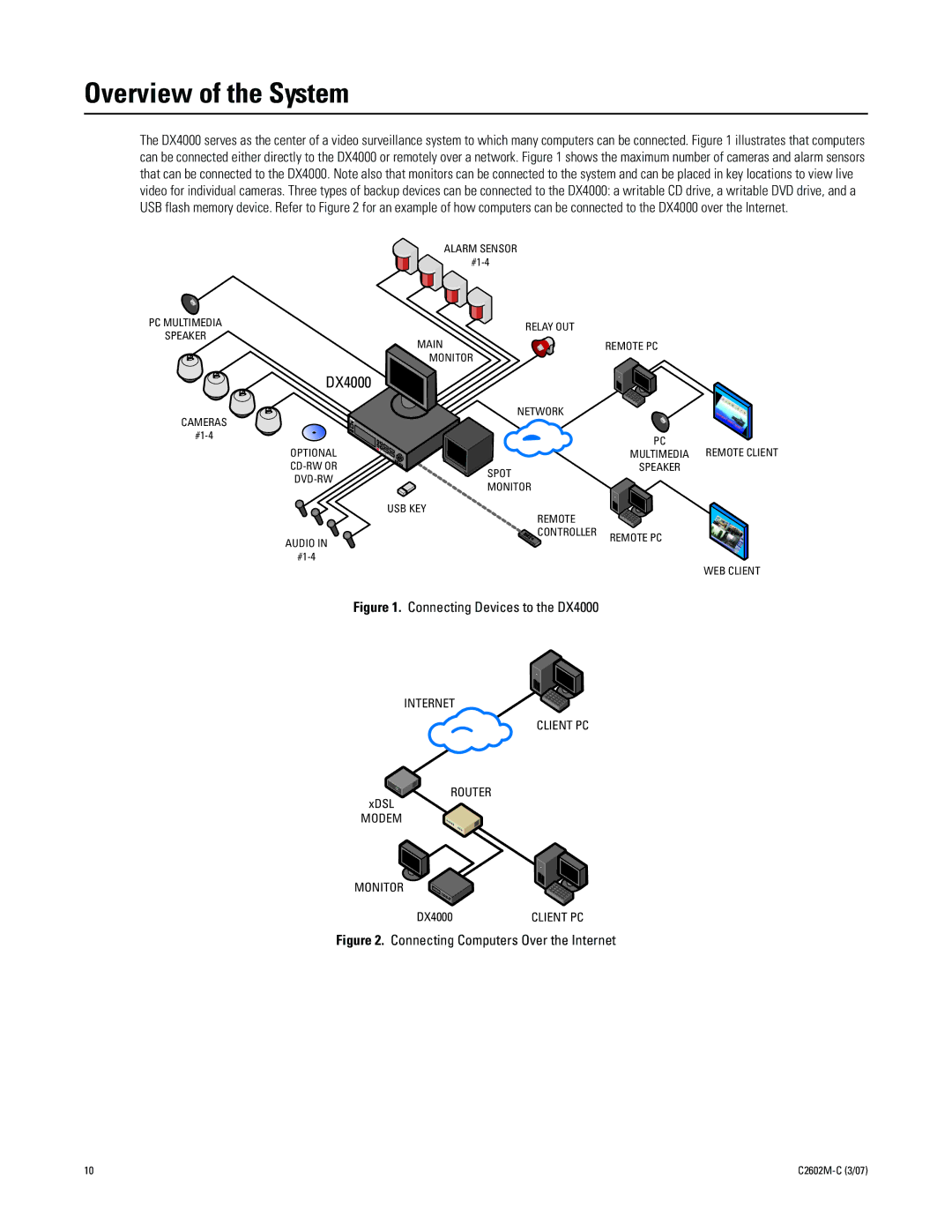
Overview of the System
The DX4000 serves as the center of a video surveillance system to which many computers can be connected. Figure 1 illustrates that computers can be connected either directly to the DX4000 or remotely over a network. Figure 1 shows the maximum number of cameras and alarm sensors that can be connected to the DX4000. Note also that monitors can be connected to the system and can be placed in key locations to view live video for individual cameras. Three types of backup devices can be connected to the DX4000: a writable CD drive, a writable DVD drive, and a USB flash memory device. Refer to Figure 2 for an example of how computers can be connected to the DX4000 over the Internet.
|
| ALARM SENSOR |
|
|
|
| |
PC MULTIMEDIA |
| RELAY OUT |
|
SPEAKER |
|
| |
| MAIN | REMOTE PC | |
|
| ||
|
| MONITOR |
|
| DX4000 |
|
|
CAMERAS |
| NETWORK |
|
|
|
| |
|
| PC | |
|
|
| |
| OPTIONAL |
| MULTIMEDIA REMOTE CLIENT |
| SPOT | SPEAKER | |
|
| ||
| MONITOR |
| |
|
|
| |
|
| USB KEY |
|
|
| REMOTE |
|
| AUDIO IN | CONTROLLER | REMOTE PC |
|
| ||
|
|
| |
|
|
| |
|
|
| WEB CLIENT |
Figure 1. Connecting Devices to the DX4000
INTERNET
CLIENT PC
![]() ROUTER xDSL
ROUTER xDSL
MODEM
MONITOR
DX4000 | CLIENT PC |
Figure 2. Connecting Computers Over the Internet
10 |
